
Blood in the Machine: The Origins of the Rebellion Against Big Tech
by
Brian Merchant
Published 25 Sep 2023
William Godwin: Writer, philosopher, founding proponent of anarchism; Mary Godwin’s father. THE MACHINERY Stocking frame: Machine used by framework knitters to produce stockings, lace, and knit goods. Invented in Nottingham in 1589. Handloom: Machine used to weave woollen and cotton cloth. The earliest looms date to the fifth century BCE. Spinning jenny: Invented by James Hargreaves in 1764, the device reduced the labor required to spin wool into yarn. Water frame: Patented by Richard Arkwright in 1769, the machine applied waterpower to the design of the spinning jenny and further automated the process of producing yarn. Gig mill: Also called the gigging machine, this device automatically raised the nap of woven fabric to draw out the ends of the fibers, making it easier to finish, or smooth, the cloth.
…
The massive demand for English cloth continued to inspire innovations in both the machinery that made a worker’s life easier, and more disruptive technologies that promised a dramatic increase in the rate of production. In 1733, an apprentice craftsman named John Kay patented the flying shuttle, a device that let a single weaver, instead of two, work a broadloom. In the 1760s, a weaver and cotton spinner named James Hargreaves invented the spinning jenny, which let a single worker spin multiple threads into yarn with the crank of a handle—previously it took six. Just a couple years later, Arkwright built his water frame, applying hydropower to the spinning device and assuring the production of vast volumes of yarn.
…
They were all too aware of the kind of innovations that were accelerating the Industrial Revolution. In 1710, cloth merchants had taken to using unpaid apprentices on their own stocking frames instead of paying skilled workers fair wages. After weeks of fruitless negotiation, the stockingers smashed a hundred of the hosiers’ machines. In 1768, after James Hargreaves unveiled his spinning jenny, a band of cotton spinners broke into his shop and destroyed it. He’d developed the device in secret, fearing precisely this outcome, and was forced to leave town before he tried to commercialize it. In 1779, angry workers burned one of Arkwright’s factories to the ground while town officials looked on in sympathy—with the workers.
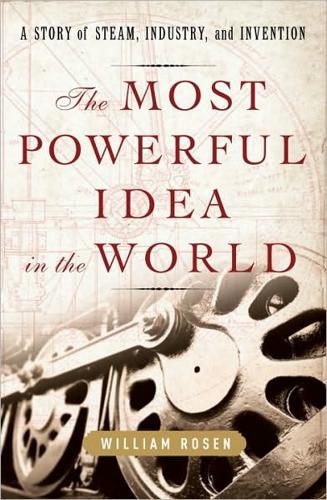
The Most Powerful Idea in the World: A Story of Steam, Industry, and Invention
by
William Rosen
Published 31 May 2010
At almost exactly the same time that Matthew Boulton was creating the Soho Manufactory, Henry Cort was building his puddling furnace, Joseph Black was investigating the properties of latent heat, and James Watt was repairing Glasgow University’s broken model of a Newcomen engine, a Lancashire weaver had his own Gestalt moment.* The year of James Hargreaves’s inspiration is a little vague—his daughter dated it to 1766—but not its character. While visiting a friend, Hargreaves observed a spinning wheel that had been knocked down; with the wheel and spindle in a vertical position, rather than their then-traditional horizontal one, they continued to revolve.
…
By placing the burden of proof on Arkwright rather than his accusers, his competitors in the cotton industry, who had invested hundreds of thousands of pounds in machinery that they understandably wanted to be able to use without permission from Arkwright, had stumbled on a powerful weapon. The trial of Rex v. Arkwright, which was heard at Westminster Hall in June 1785, was the result. The original dubiousness of Arkwright’s “invention” now came back to haunt him, as Highs and Kay, and even James Hargreaves’s widow, all appeared as witnesses against him, with Kay going on record as saying “he never would have had the rollers but through me.” Arkwright, during his own testimony, said, “if any man has found out a thing,40 and begun a thing, and does not go forwards … another man has the right to take it up, and get a patent for it.”
…
Lynn White, citing ambiguous illustrations in the windows of the cathedral at Chartres and an earlier regulation in the town of Speyer, gives the date of 1280. 24 “put [it] between a pair of rollers” Usher, “The Textile Industry, 1750–1830,” in Kranzberg and Pursell, eds., Technology in Western Civilization. 25 In a flash, Hargreaves imagined “James Hargreaves” in Oxford Dictionary of National Biography. 26 “almost wholly with a pocket knife” Ibid. 27 “came to our house and burnt” Ibid. 28 “much application and many trials” Ibid. 29 “Weavers typically rested and played long” Landes, Wealth and Poverty of Nations. 30 “When in due course, SAINT MONDAY” Douglas A.

A World Without Work: Technology, Automation, and How We Should Respond
by
Daniel Susskind
Published 14 Jan 2020
Regarding printed Bibles, they said that only the devil himself could produce so many copies of a book so swiftly.7 But the particular character of the changes that took place during the Industrial Revolution was different from the past. Their intensity, breadth, and persistence gave a fresh severity to the familiar worries. AUTOMATION ANXIETY This anxiety that automation would destroy jobs spilled into protest and dissent. Consider the experience of James Hargreaves, the modest man who invented the spinning jenny. An illiterate cotton weaver, he retreated to a remote village in Lancashire, England, to build his device in peace. This was a machine that would allow thread to be spun from cotton far more swiftly than with human hands alone, a valuable innovation at a time when turning raw cotton into useable thread was a growing business.
…
Google’s assorted Internet services, for instance, require two billion lines of code: if these were to be printed out on paper and stacked up, the tower would be about 2.2 miles high.12 Writing good code requires talented—and expensive—software engineers. The average salary for a developer in San Francisco, for example, is about $120,000 a year, while the best engineers are treated as superstars and receive pay packages to match.13 Today, when we recount economic history, we punctuate it with people like James Hargreaves, the inventor of the spinning jenny. In the future, when people tell the history of our own time, it will be filled with names like Demis Hassabis, of DeepMind, and other software engineers, as yet unknown. As for processing power, many of the new systems require extraordinarily powerful hardware to run effectively.

Civilization: The West and the Rest
by
Niall Ferguson
Published 28 Feb 2011
The second and third of these increased in quantity in the nineteenth century,* but it was the qualitative improvement that really mattered – the fact that total output exceeded the combined increments of workers and mills. In terms of supply, then, the Industrial Revolution was a hunt for efficiency. James Hargreaves’s spinning jenny (1766), Richard Arkwright’s water frame (1769), Samuel Crompton’s mule (1779), Edmund Cartwright’s steam-powered loom (1787) and Richard Roberts’s self-acting mule (1830): these were all ways of making more thread or cloth per man-hour. The spinning jenny, for example, allowed a single worker simultaneously to spin cotton yarn with eight spindles.
…
Like Marx – and like a disproportionate number of nineteenth- and twentieth-century entrepreneurs, especially in the clothing and cosmetics business* – Singer was of Jewish origin. And, like Marx, he changed the world – though, unlike Marx, for the better. I. M. Singer & Company, later the Singer Manufacturing Company, completed the process of mechanizing clothes production that James Hargreaves had begun less than a century before. Now even the sewing together of pieces of cloth could be done by machine. The revolutionary nature of this breakthrough is easily overlooked by a generation that has never sewn on more than a couple of buttons. Singer was evidently a man who loved women; has any man done more for womankind in return?

The Rational Optimist: How Prosperity Evolves
by
Matt Ridley
Published 17 May 2010
As the twentieth-century economist Colin Clark put it, ‘Leisure has a real value even to very poor people.’ So, stuck between booming demand and stalling supply, the putters-out and their suppliers were ripe customers for any kind of productivity-enhancing invention, and with such an incentive, the inventors soon obliged. John Kay’s flying shuttle, James Hargreaves’s spinning jenny, Richard Arkwright’s water frame, Samuel Crompton’s mule – these were all just milestones on a continuous road of incrementally improving productivity. The jenny worked up to twenty times as fast as a spinning wheel and produced a more consistent yarn, but it was still operated entirely by human muscle power.
…
It is, of course, true that England had a scientific revolution in the late 1600s, personified in people like Harvey, Hooke and Halley, not to mention Boyle, Petty and Newton, but their influence on what happened in England’s manufacturing industry in the following century was negligible. Newton had more influence on Voltaire than he did on James Hargreaves. The industry that was transformed first and most, cotton spinning and weaving, was of little interest to scientists and vice versa. The jennies, gins, frames, mules and looms that revolutionised the working of cotton were invented by tinkering businessmen, not thinking boffins: by ‘hard heads and clever fingers’.
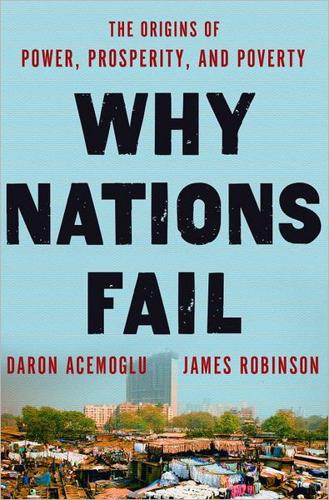
Why Nations Fail: The Origins of Power, Prosperity, and Poverty
by
Daron Acemoglu
and
James Robinson
Published 20 Mar 2012
Many organized against it, rioting and destroying the machines they saw as responsible for the decline of their livelihood. They were the Luddites, a word that has today become synonymous with resistance to technological change. John Kay, English inventor of the “flying shuttle” in 1733, one of the first significant improvements in the mechanization of weaving, had his house burned down by Luddites in 1753. James Hargreaves, inventor of the “spinning jenny,” a complementary revolutionary improvement in spinning, got similar treatment. In reality, the artisans were much less effective than the landowners and elites in opposing industrialization. The Luddites did not possess the political power—the ability to affect political outcomes against the wishes of other groups—of the landed aristocracy.
…
The methods of spinning did not change until the eighteenth century. Significant innovations began in 1738, when Lewis Paul patented a new method of spinning using rollers to replace human hands to draw out the fibers being spun. The machine did not work well, however, and it was the innovations of Richard Arkwright and James Hargreaves that truly revolutionized spinning. In 1769 Arkwright, one of the dominant figures of the Industrial Revolution, patented his “water frame,” which was a huge improvement over Lewis’s machine. He formed a partnership with Jedediah Strutt and Samuel Need, who were hosiery manufacturers. In 1771 they built one of the world’s first factories, at Cromford.

How We Got Here: A Slightly Irreverent History of Technology and Markets
by
Andy Kessler
Published 13 Jun 2005
Shear a sheep, and then wind the wool on a spinning wheel. Invented who knows how many centuries before, as quaint as could be. But as weavers demanded more yarn of higher quality, they substituted cotton from the New World for expensive wool. Along came the Spinning Jenny. Invented in 1764 by James Hargreaves, it combined eight and eventually 80 spindles of wool into a thread strong enough to sew with. Hargreaves got the idea (or at least according to legend) when his daughter Jenny knocked over the family spinning wheel and had to chase it through the house. When local spinners heard of the invention, they broke into his home in Lancashire and busted the Jenny up, the wooden one.

Makers
by
Chris Anderson
Published 1 Oct 2012
We’ve already seen it work before in bits, from the original PC hobbyists to the Web’s citizen army. Now the conditions have arrived for it to work again, at even greater, broader scale, in atoms. Chapter 3 The History of the Future What happened in Manchester and the cottage industries of England changed the world. It could happen again. In 1766, James Hargreaves, a weaver in Lancashire, was visiting a friend when he saw a spinning wheel fall on its side. For some reason it kept spinning, and something about the contraption still working in the unfamiliar orientation triggered a vision in Hargreaves’s mind: a line of spindles, side by side, spinning multiple threads of cotton from flax simultaneously.

12 Bytes: How We Got Here. Where We Might Go Next
by
Jeanette Winterson
Published 15 Mar 2021
A spinster wasn’t a past-it woman who had ‘failed’ to find a man, she was a valued member of the community, who could, if she wished, support herself independently. * * * Twisting wisps of fibre onto wheels is the kind of process that lends itself to mechanisation. Whatever is repetitive can be done faster by a machine. After thousands of years of women and men spinning by hand, James Hargreaves’ Spinning Jenny (1764) and Samuel Crompton’s Spinning Mule (1779) had the process of spinning a pound of yarn down from 40 hours to 3 hours – and it was soon cut to 90 minutes. Then in 1785 Edmund Cartwright did for weaving what the other boys had done for spinning. The power loom went into the new factories and by the turn of the century the great age of industrialisation had begun
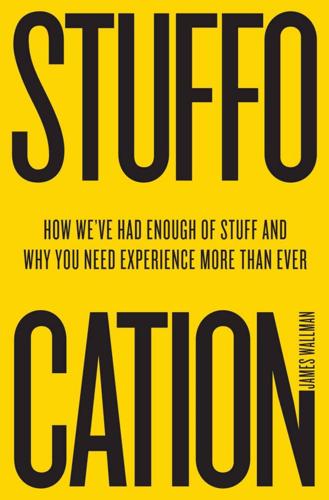
Stuffocation
by
James Wallman
Published 6 Dec 2013
In it, Darwin proved that all animals had evolved through a process of natural selection, where only the fittest survived, and those that did not adapt did not. If you were a man of letters or industry in the 19th century, Darwin’s theory was both interesting and inspiring. If you thought about this idea for a moment, it sounded an awful lot like the industrial revolutions of recent years. When James Hargreaves had invented the spinning jenny in Lancashire in the 1760s, for instance, the spinner could now spin yarn twenty times more efficiently than if she had been using her old spinning wheel. That new spinning jenny not only revolutionized how quickly a spinner could produce yarn. It also meant the spinning wheel would now only be useful for burning.

The Journey of Humanity: The Origins of Wealth and Inequality
by
Oded Galor
Published 22 Mar 2022
Meanwhile, the Newcomen steam engine set in motion the technological leap that, in just 250 years, would allow the Soviets to launch sputnik into space and the Americans to land humans aboard Apollo 11 on the moon. The textile industry was the cutting edge of the Industrial Revolution, the high-tech sector of its day. A pantheon of British inventors – most notably John Kay, Richard Arkwright, James Hargreaves, Edmund Cartwright and Samuel Crompton – designed sophisticated machines that automated much of the textile manufacturing process. Automation slashed the hours of labour needed to produce each roll of fabric, reducing the price of finished garments and enabling poor families in Europe and its colonies to purchase clothes of a superior quality.
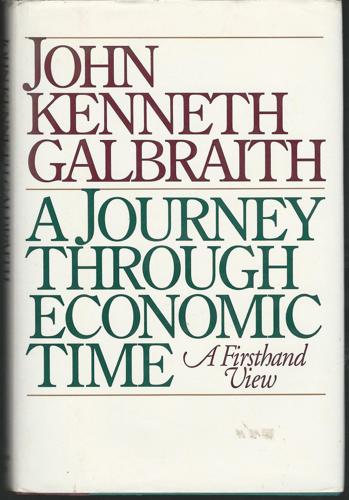
World Economy Since the Wars: A Personal View
by
John Kenneth Galbraith
Published 14 May 1994
Most important, in all the earlier stages of development there was no close and predictable correlation between the supply of educated men and the nature of their training and the rate of technological innovation. Inventions were more often the result of brilliant flashes of insight than the product of long prepared training and development. The Industrial Revolution in England was ushered in by the invention of the flying shuttle by John Kay, the spinning jenny by James Hargreaves, the spinning frame by (presumptively) Richard Arkwright and, of course, by James Watt's steam engine. These represented vast improvements in the capital which was being put to industrial use. But only in the case of Watt could the innovation be related to previous education and preparation.
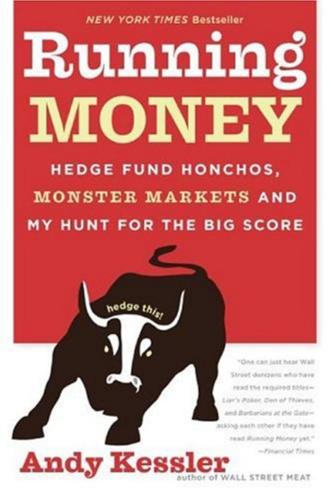
Running Money
by
Andy Kessler
Published 4 Jun 2007
So much so that in 1755, a mob broke into John Kay’s house and destroyed one of his flying shuttle looms. While weaving got faster, making thread or yarn was still old-fashioned. Now weavers demanded more yarn of higher quality. Cheap cotton from the New World began to make inroads against itchy wool and even comfortable but expensive silk. In 1764, James Hargreaves invented the Spinning Jenny, which Pressure Drop 65 wound strands of cotton into thread. Around the same time, Richard Arkwright invented and patented a device named the Spinning Frame to wind thread into bundles of yarn. Although the Spinning Frame was originally designed to be hand cranked, Arkwright ended up needing horses to operate it, and even they proved not to be powerful enough, so he moved the whole thing riverside, changing the machine’s name to a Water Frame.
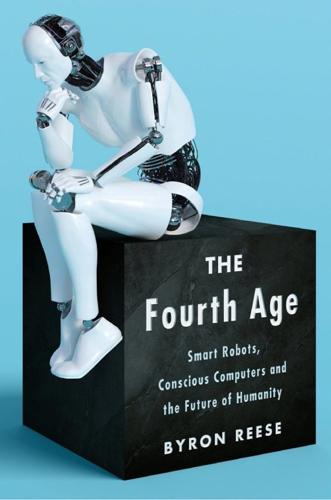
The Fourth Age: Smart Robots, Conscious Computers, and the Future of Humanity
by
Byron Reese
Published 23 Apr 2018
Boatmen destroyed the first attempts at a steam engine, which they felt would put them out of work. So overwhelming was the protest against ribbon looms in Germany that they were ordered burned by the government. When the fly shuttle was invented to make weaving easier, its creator, John Kay, was attacked by a crowd. James Hargreaves, who created another breakthrough in textiles called the spinning jenny, saw his creation burned by yet another mob in England. John Heathcoat, who created technology to make the creation of lace more efficient, saw his entire factory and its equipment torched in broad daylight. In 1811, this hostility toward automation coalesced into the Luddite movement, which consisted of a group of people violently opposed to technology that replaced skilled laborers.

How to Be Idle
by
Tom Hodgkinson
Published 1 Jan 2004
People worked, yes, they did 'jobs ' , but the idea of being yoked to one particular employer to the exclusion of all other money-making activity was unknown. And the average man enjoyed a much greater degree of independence than today. Take the weavers. Before the invention in 1 764 of the spinning jenny by the weaver and carpenter James Hargreaves, and of the steam engine in the same year by James Watt, weavers were generally self-employed and worked as and when they chose. The young Friedrich Engels noted that they had control over their own time: ' So it was that the weaver was usually in a position to lay by something, and rent a little piece of land, that he cultivated in his leisure hours, of which he had as many as he chose to take, since he could weave whenever and as long as he pleased, ' he wrote in his 1845 study The Condition of the Working Class in England. ' They did not need to overwork; they did no more than they chose to do, and yet earned what they needed. ' In addition to this autonomous and leisure-filled life, the weavers were also in control of the whole manufacturing process: they produced the cloth and sold it to a travelling merchant.

Capitalism and Its Critics: A History: From the Industrial Revolution to AI
by
John Cassidy
Published 12 May 2025
But between 1811 and 1813, there was unrest in many parts of northern England. In Lancashire, it centered on the handloom weavers—men, women, and children who wove cotton yarn into cloth on wooden handlooms, often in their own homes. Ironically, the early stages of industrialization had been a boon to the weavers. The new spinning machines invented by Arkwright, James Hargreaves, and others greatly increased the British cotton industry’s capacity to produce yarn. Because the intricate process of weaving yarn into cloth for decades proved too complicated to mechanize, the demand for the labor of handloom weavers increased sharply. Between 1780 and 1812, the number of handlooms more than quadrupled, from 37,000 to 208,000.26 Most weavers were paid piece rates, which rewarded them for producing more.
…
During the 1970s, a new generation of quantitatively minded economic historians queried some of Williams’s arguments, particularly his claim that profits from the slave trade helped to finance the development of the Lancashire mills. These scholars pointed out that many of the key technical innovations in the cotton industry—including Richard Arkwright’s water frame, James Hargreaves’s spinning jenny, Samuel Crompton’s spinning mule, and Edmund Cartwright’s power loom—were the creations of mechanical tinkerers who had little, if any, outside funding. Furthermore, the early Lancashire cotton mills, where the new inventions were put to use, were small by modern standards, and they didn’t need much, if any, external financing, because they generated large profits.

The English
by
Jeremy Paxman
Published 29 Jan 2013
Yet the inhabitants of the north did not become more than paradigms of themselves – Yorkshire Tykes, Tyneside Geordies or Liverpudlian Scousers. The wealth of modern England was built on the Industrial Revolution, so how did towns like Preston, Bolton and Blackburn, which produced three cotton-spinning geniuses in Richard Arkwright, Samuel Crompton and James Hargreaves, somehow manage to be exiled from the country the English imagined they were living in? Some of the reasons are practical. Firstly, they suffer from the significant disadvantage of being a long way from London, where fashions are set. Secondly, no coherent ‘north country’ has been invented in its own right: it exists mainly in contrast to southern England, which is seen as fat, affected and, above all, ‘soft’.
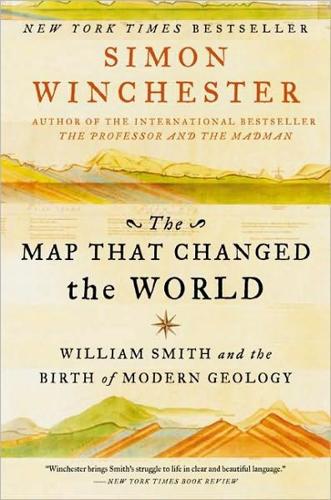
The Map That Changed the World
by
Simon Winchester
Published 1 Jan 2001
This might suggest that aspects of the religious climate into which William Smith was born—and that he was to help start changing—are now starting to return. * Smith was to feel somewhat embarrassed in later years about his forebears’ determined ordinariness, and he tried long and hard to prove that through his mother he was a descendant of Sir Walter Raleigh. He convinced no one and eventually abandoned the quest. * James Hargreaves, whose mechanical spinning jenny was destroyed by fearful proto-Luddites, and Samuel Crompton, whose spinning mule was a hybrid of its two predecessors, came only a little later. * William Smith was born during the administration of the sixth and least distinguished, the duke of Grafton, who acted as caretaker between the administrations of William Pitt the Elder and Lord North

The Golden Thread: How Fabric Changed History
by
Kassia St Clair
Published 3 Oct 2018
This was a small, aerodynamic piece of wood that could be quickly propelled from one side of the loom – through the serried ranks of the warp – to the other, dragging the weft threads with it as it went. This increased the speed of weavers so dramatically, that afterwards it took four spinners to supply just one weaver. To correct this imbalance, inventors focused on improving the speed of spinners. In 1764 James Hargreaves created the spinning jenny; five years later came Richard Arkwright’s water frame; and a decade after that, the steam-powered mule was set in motion by Samuel Crompton. All exponentially improved the quantity of spun yarn. In 1785, Edmund Cartwright’s power loom became the first steam-powered weaving machine.

Making It in America: The Almost Impossible Quest to Manufacture in the U.S.A. (And How It Got That Way)
by
Rachel Slade
Published 9 Jan 2024
She wrote, “The purity of our forefathers taught simplicity of dress…they then had no ruffles, no ribbons…but all was neat and tidy.” While Crawford’s grandmother was carding wool day and night, the British were figuring out how to industrialize their own textile production. Englishman John Kay invented the flying shuttle in 1733, enabling weavers to work faster. In 1770, James Hargreaves received a patent for the spinning jenny—a multiple-spindle machine that semiautomated the task of hand-spinning wool into yarn, greatly increasing the speed at which material was produced. Five years later, Richard Arkwright patented the spinning frame, which spun yarn even faster. Once he mastered the machine works, Arkwright built a huge, multistory water-powered carding and spinning factory in Cromford, Derbyshire, and became a very wealthy man.
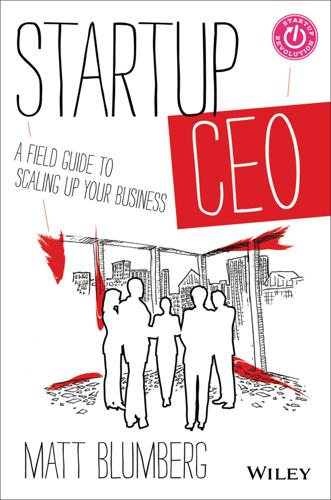
Startup CEO: A Field Guide to Scaling Up Your Business, + Website
by
Matt Blumberg
Published 13 Aug 2013
This might not seem all too glamorous, but, Gladwell points out, it is essential to real growth: In 1779, Samuel Crompton, a retiring genius from Lancashire, invented the spinning mule, which made possible the mechanization of cotton manufacture. Yet England’s real advantage was that it had Henry Stones, of Horwich, who added metal rollers to the mule; and James Hargreaves, of Tottington, who figured out how to smooth the acceleration and deceleration of the spinning wheel; and William Kelly, of Glasgow, who worked out how to add water power to the draw stroke; and John Kennedy, of Manchester, who adapted the wheel to turn out fine counts; and, finally, Richard Roberts, also of Manchester, a master of precision machine tooling—and the tweaker’s tweaker.

Black Box Thinking: Why Most People Never Learn From Their Mistakes--But Some Do
by
Matthew Syed
Published 3 Nov 2015
But there is a problem with the linear model: in most areas of human development, it severely underestimates the role of bottom-up testing and learning of the kind adopted by the Unilever biologists. In his book The Economic Laws of Scientific Research, Terence Kealey, a practicing scientist, debunks the conventional narrative surrounding the Industrial Revolution: In 1733, John Kay invented the flying shuttle, which mechanized weaving, and in 1770 James Hargreaves invented the spinning jenny, which as its name implies, mechanized spinning. These major developments in textile technology, as well as those of Wyatt and Paul (spinning frame, 1758), Arkwright (water frame, 1769), presaged the Industrial Revolution, yet they owed nothing to science; they were empirical developments based on the trial, error and experimentation of skilled craftsmen who were trying to improve the productivity, and so the profits, of their factories.5 Note the final sentence: these world-changing machines were developed, like Unilever’s nozzle, through trial and error.

Head, Hand, Heart: Why Intelligence Is Over-Rewarded, Manual Workers Matter, and Caregivers Deserve More Respect
by
David Goodhart
Published 7 Sep 2020
In most countries touched by industrial takeoff, the universities initially had little to do with the training of the new scientific and technical class, and this was especially true of England, where Oxford (established in 1096) and Cambridge (established 1209) remained the only universities for more than six hundred years, well into the nineteenth century. Most of the innovations associated with the first industrial revolution in Britain—from the formation of the Royal Society in 1660 to key inventions such as James Hargreaves’s spinning jenny (1764) and James Watt’s steam engine (1775)—had nothing to do with England’s fossilized “Oxbridge duopoly.” Learned societies like the Lunar Society of Birmingham were far more intellectually significant. And although the philosopher John Locke graduated from Oxford in the mid-seventeenth century after having studied medicine, natural philosophy, and philosophy, the Enlightenment, too, had only a limited impact on the two institutions, which remained dominated by the Anglican church and the teaching of theology and the classics (with some mathematics and natural sciences) until the latter part of the nineteenth century.

Empty Vessel: The Story of the Global Economy in One Barge
by
Ian Kumekawa
Published 6 May 2025
The self-proclaimed focus of the company’s leadership in the 1980s was the so-called technology strategy, which prioritized process automation.[26] There is a long history of corporations and factory owners turning to machines as a way of saving on labor costs. One of the most influential accounts of why the Industrial Revolution took off in Britain (as opposed to elsewhere) was that Britain had comparatively high prevailing wages.[27] High wages, the story goes, created an incentive for technological innovation. The resulting machines—like James Hargreaves’s spinning jenny, James Watt’s steam engine, and Richard Arkwright’s water frame—were catalysts for spectacular industrial growth. At the same time, for as long as factory owners turned to machines to save on labor, workers have resisted such movements. In the 1810s, facing the introduction of new industrial machinery and the inevitable loss of employment, textile workers across the English north and midlands began campaigns of machine breaking.

The Dawn of Innovation: The First American Industrial Revolution
by
Charles R. Morris
Published 1 Jan 2012
Drawing up machinery to replicate hand-spinning was relatively straightforward, but actually building machines that could manipulate the threads more or less as humans did, and without breaking them, took years of trial-and-error experiment. The first successful spinning machine was the jenny, built in 1767 and driven by a hand crank. James Hargreaves, a weaver, worked out a method of holding the rough cotton, or roving, with pins, while a bar stretched out and twisted the fibers. It worked well enough that an early demonstration provoked a riot by the local hand-spinners. But by the 1780s, many cottage hand-spinners were using twelve-and twenty-four-spindle jennies.

Extreme Economies: Survival, Failure, Future – Lessons From the World’s Limits
by
Richard Davies
Published 4 Sep 2019
From the threshing machine to the tractor (1896), the combine harvester (1911), automation in slaughter houses (1960s) and milking machines (1970), to the Smart Farm (2015), promoted by an Estonian start-up, the advance of agricultural technology never really stopped. Fears over the impact of technology on jobs morphed into anger at inventors and violence against machines in the Industrial Revolution too. Take the case of Lancashire-born James Hargreaves. In the early 1700s spinning – twisting natural fibres together to create the yarn used in weaving – was the bottleneck in cloth production: weaving was so much faster that five spinners were needed to supply each weaver. Clothing was labour-intensive and costly to make: a shirt took around 580 hours, 500 of which was spent spinning.
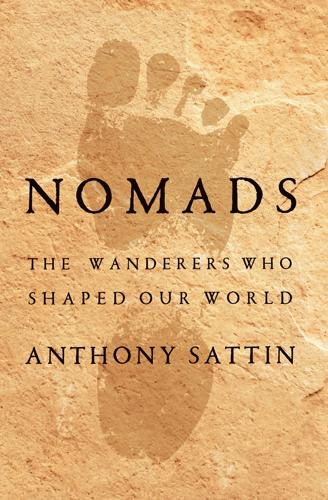
Nomads: The Wanderers Who Shaped Our World
by
Anthony Sattin
Published 25 May 2022
Ever since wheat had been domesticated more than eleven thousand years earlier, seed had been sown by hand, either scattered at random or with each seed placed in its individual hole. Tull’s mechanical planter did away with all that and meant that fields could be sown faster and with less labour. The seed planter’s ingenuity and efficiency was more than matched by other inventions, none more transformational than the one created by James Hargreaves, a cotton weaver in north-west England. Hargreaves’s business relied on a steady supply of spun cotton, but spinning was another of those labour-intensive cottage industries. To speed up the process and ensure a regular supply of spun cotton, in 1765 Hargreaves designed the ‘Spinning Jenny’, a machine capable of spinning several wheels at the same time.
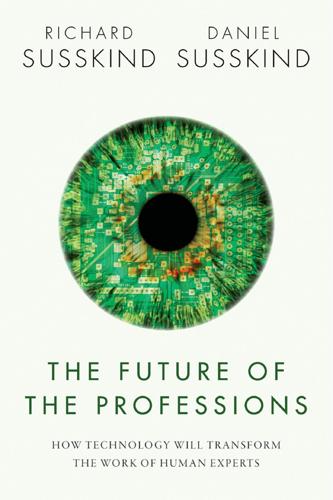
The Future of the Professions: How Technology Will Transform the Work of Human Experts
by
Richard Susskind
and
Daniel Susskind
Published 24 Aug 2015
David Card and Orley Ashenfelter (2011), 1043–171. 28 The spirit of their anxieties is shared with the original nineteenth-century ‘Luddities’ (whose name derives from their declared support for Ned Ludd, an East Midlands weaver who smashed a set of framing machines in anger and in fear in the early tremors of the Industrial Revolution). The Luddites viewed James Hargreaves’s spinning jenny in the nineteenth century with the same anxious suspicion that today’s pessimists view Tim Berners-Lee’s World Wide Web in the twenty-first century. See Eric Hobsbawm and George Rudé, Captain Swing (2001). 29 David Autor, ‘Polanyi’s Paradox and the Shape of Employment Growth’, NBER Working Paper 20485, National Bureau of Economic Research (2014). 30 Erik Brynjolfsson and Andrew McAfee, The Second Machine Age: Work, Progress, and Prosperity in a Time of Brilliant Technologies (2014).
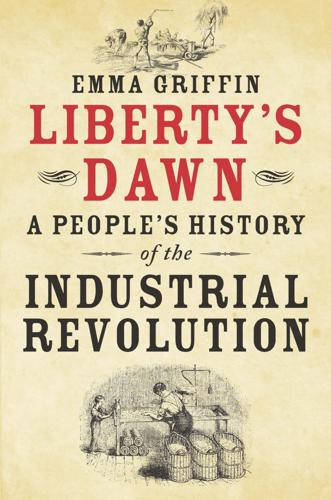
Liberty's Dawn: A People's History of the Industrial Revolution
by
Emma Griffin
Published 10 Jun 2013
And it is one of enduring relevance in our own times as other parts of the globe industrialise at a galloping pace. 4017.indd 4 25/01/13 8:21 PM introduction: ‘a simple naritive’ 5 As the moment when one small European nation left behind its agrarian past and entered decisively on the path to modernity, the industrial revolution has quite rightly attracted the attention of generation after generation of historians. But most of this work has focused on the great men and machines that turned Britain into the workshop of the world: James Hargreaves, Richard Arkwright, James Watt, George Stevenson, Isambard Kingdom Brunel; the spinning jenny, the water frame, the steam engine, the locomotive engine, the railways. These individuals and their achievements transformed Britain into an industrial nation and fully deserve the attention they have received.
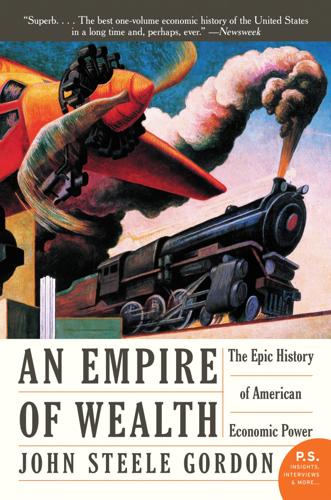
An Empire of Wealth: Rise of American Economy Power 1607-2000
by
John Steele Gordon
Published 12 Oct 2009
An entrepreneur would give workers the necessary materials and then pay them by the piece for completed work. It took, on average, four spinners to supply one loom. But John Kay’s invention of the flying shuttle in 1733 upset the balance because it made weaving much faster. Either more spinners or a faster way of doing the spinning was needed. In 1764 James Hargreaves introduced the spinning jenny, which could spin eight threads at a time, and five years later James Arkwright improved on it with the water frame, so called because it was powered by a waterwheel. This mechanization made thread abundant, and, now to speed up the weaving, the Reverend Edmund Cartwright developed the power loom in 1785.

Investment: A History
by
Norton Reamer
and
Jesse Downing
Published 19 Feb 2016
For instance, Johannes Gutenberg’s revolutionary printing press of the fifteenth century clearly facilitated the diffusion of knowledge that made the Industrial Revolution—and its necessary technological innovations and inventions—possible in the first place. Among the other facilitating technologies of the Industrial Revolution was James Hargreaves’s spinning jenny, a spinning frame with multiple spindles that vastly increased production volume in the textile industry. Combined with the flying shuttle, the spinning jenny took the textile industry into the next competitive era. James Watt’s late eighteenth-century steam engine changed most industries using mechanical power, especially transportation and agriculture, quite significantly.

Behemoth: A History of the Factory and the Making of the Modern World
by
Joshua B. Freeman
Published 27 Feb 2018
A large, underemployed agricultural workforce constituted a potential labor pool for large-scale industry.17 In the last decades of the eighteenth century, English inventors, artisans, and merchant manufacturers developed a series of machines to boost the quality and quantity of locally produced cotton yarn. James Hargreaves developed the first mechanical spinning device in 1764, the jenny. It proved of limited use, since it could only produce weft and required a skilled worker to operate. Richard Arkwright was more successful. A tinkerer, who had had his ups and downs as a barber, wig maker, and public house owner, Arkwright applied for a patent on a spinning machine in 1768 and seven years later for carding equipment.

The Relentless Revolution: A History of Capitalism
by
Joyce Appleby
Published 22 Dec 2009
Four men, working independently, transformed textile making with their inventions of the spinning jenny, the spinning mule, and the power loom, all designed to speed up the process of turning wool into thread and thread into cloth. Their differing success epitomizes the mixed fate of inventors. Both James Hargreaves and Thomas Arkwright came up with the spinning jenny, a simple device that multiplied the spindles of yarn spun by one wheel. Once it was in operation, the number of additional spindles went quickly from eight to eighty. Hargreaves was a weaver, but Arkwright had better connections to backers and was able to set up a factory where he successfully brought six hundred workers, many of them women and children, under one roof.
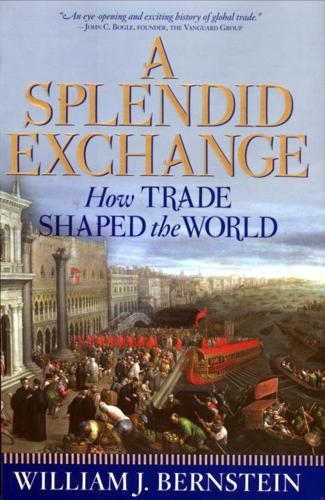
A Splendid Exchange: How Trade Shaped the World
by
William J. Bernstein
Published 5 May 2009
Just a dozen years after the passage of the act of 1721, John Kay perfected the flying shuttle, which doubled weavers' productivity. This served to increase the demand for thread, whose spinning was more difficult to mechanize. In 1738, Lewis Paul and John Wyatt patented the first mechanical spinning machine, but no commercially feasible device became available until the mid-1760s, when such machines were invented by James Hargreaves, Richard Arkwright, and Samuel Crompton. (These were, respectively, the spinning jenny, the water frame, and the mule, the latter so-called because it was a hybrid of the first two.)55 As the economic historian Eric Hobsbawm famously said, "Whoever says Industrial Revolution says cotton." The new machines that were the heart of the great transformation made redundant untold thousands of spinners and weavers, who engaged in spasms of "machine breaking" in the eighteenth and nineteenth centuries before finally disappearing into the new mills.56 (The term "Luddite" derives from the probably fictional leader of the machine-breaking riots in the 1810s, Ned Ludd.)

The Technology Trap: Capital, Labor, and Power in the Age of Automation
by
Carl Benedikt Frey
Published 17 Jun 2019
Arkwright’s water frame, which put roller spinning into practice, is estimated to have cut the cost of labor for spinning by two-thirds and overall costs of coarse cotton production by 20 percent. The economics of Arkwright’s second invention, the carding machine, were similar. And like the water frame it was not an invention of staggering novelty. Indeed, the novelty of his invention was called into question, as his patent was challenged.12 The other key invention was James Hargreaves’s spinning jenny. Hargreaves is said to have conceived it when he watched a spinning wheel fall to the floor and, while revolving, seem to do the spinning by itself. What is certain is that the machine was very simple. It was a rectangular frame on four legs with a row of vertical spindles on one end.
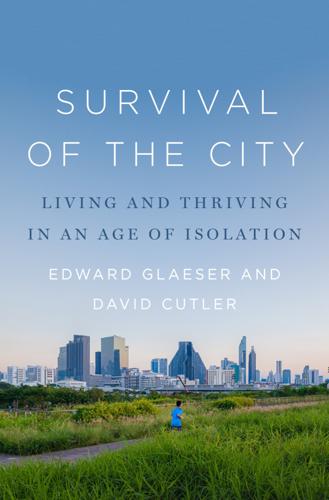
The Survival of the City: Human Flourishing in an Age of Isolation
by
Edward Glaeser
and
David Cutler
Published 14 Sep 2021
What exactly makes a warehouse safe from typhus or COVID-19? The Peels of Manchester illustrate the intertwined nature of industrial job creation and public hygiene. The first Robert Peel, who lived from 1723 to 1795, was an innovator of products, such as his “parsley” patterned calicos, and production techniques. He employed his neighbor, James Hargreaves, who invented the spinning jenny. Peel’s embrace of labor-saving devices made him a target of Luddite anti-machine violence, but the new technology made him productive and wealthy enough to own twenty-three mills. His son, also Robert, whom we shall just call Peel, lived from 1750 to 1830 and became even wealthier.
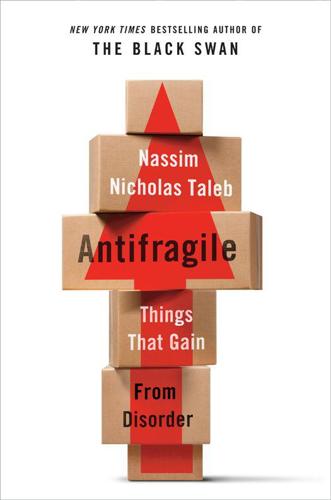
Antifragile: Things That Gain From Disorder
by
Nassim Nicholas Taleb
Published 27 Nov 2012
Kealey presents a convincing—very convincing—argument that the steam engine emerged from preexisting technology and was created by uneducated, often isolated men who applied practical common sense and intuition to address the mechanical problems that beset them, and whose solutions would yield obvious economic reward. Now, second, consider textile technologies. Again, the main technologies that led to the jump into the modern world owe, according to Kealey, nothing to science. “In 1733,” he writes, “John Kay invented the flying shuttle, which mechanized weaving, and in 1770 James Hargreaves invented the spinning jenny, which as its name implies, mechanized spinning. These major developments in textile technology, as well as those of Wyatt and Paul (spinning frame, 1758), Arkwright (water frame, 1769), presaged the Industrial Revolution, yet they owed nothing to science; they were empirical developments based on the trial, error, and experimentation of skilled craftsmen who were trying to improve the productivity, and so the profits, of their factories.”
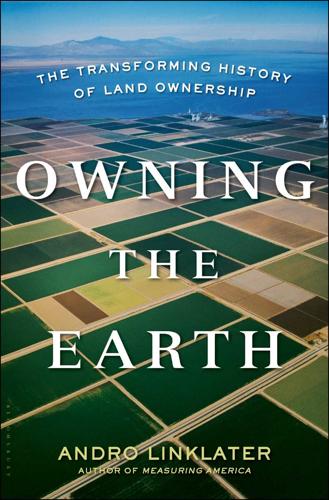
Owning the Earth: The Transforming History of Land Ownership
by
Andro Linklater
Published 12 Nov 2013
Fighting their way through the battleground of competing claims to ownership of a technical innovation, ordinary common law judges increasingly made it plain that they no longer regarded the specification of the invention to be a contribution to the public good, but as the very boundary that surrounded the inventor’s property. The law’s only role was to adjudicate between rival assertions of ownership. This interpretation made it as imperative for an eighteenth-century inventor to register his claim to possession as it was for a sixteenth-century encloser. No one with a significant idea, such as James Hargreaves with his bank of mechanically operated spinning-wheels, his “spinning jenny,” could afford not to seek a patent. However fragile its protection, it provided legal evidence of a natural right to what both Boulton and Watt routinely called “our property.” Without a patent, that natural right might pass to anyone who claimed it.

Ellul, Jacques-The Technological Society-Vintage Books (1964)
by
Unknown
Published 7 Jun 2012
We already know how this necessity arose ( it is emphasized in all textbooks). The flying shuttle of 1733 made a greater pro- 111) THE CHARACTEROLOCY OF TECHNIQUE duction of yarn necessary. But production was impossible without a suitable machine. The response to this dilemma was the invention of the spinning jenny by James Hargreaves. But then yarn was product*! in much greater quantities than could possibly be used by the weavers. To solve this new problem, Cartwright manu factured his celebrated loom. In this series of events we see in its simplest form the interaction that accelerates the development of machines. Each new machine disturbs the equilibrium of pro duction; the restoration of equilibrium entails the creation of one or more additional machines in other areas of operation.

The Enlightened Capitalists
by
James O'Toole
Published 29 Dec 2018
In distinction, his lifelong rival, humanist Thomas Jefferson, saw such children as potentially virtuous, self-sufficient citizens in need of an education to prepare them for democratic participation in their communities. By and large, Hamilton’s view would prevail in America and Britain over the subsequent century. Britain, circa 1800 The mid-eighteenth-century introduction of such laborsaving devices as James Hargreaves’s spinning jenny, Richard Arkwright’s water frame, and Samuel Crompton’s spinning mule greatly reduced the time it took to spin thread from cotton and to make it into cloth, functions previously performed at home by women using distaffs and spindles and, later, spinning wheels. By 1800, cotton cloth would be more efficiently mass-produced in gigantic mills far larger even than the one Defoe had described six decades earlier.

The WEIRDest People in the World: How the West Became Psychologically Peculiar and Particularly Prosperous
by
Joseph Henrich
Published 7 Sep 2020
While Newcomen’s engine opened a new era, both Denis Papin and the British military engineer Thomas Savery had come up with steam power at about the same time.13 Spinning mule (1779): Samuel Crompton’s invention is called a “mule” because it so obviously combines Richard Arkwright’s water frame (1769) with James Hargreaves’s spinning jenny (1764). Hargreaves got the idea for his jenny when he saw a single-thread wheel loom accidentally flip over onto the floor. Both the wheel and the spindle continued to rotate, but the spindle was upright, which suggested the possibility of using multiple spindles in an upright position.

Empire of Cotton: A Global History
by
Sven Beckert
Published 2 Dec 2014
Despite more women in ever more households working longer hours on the spinning wheel, the supply was insufficient. After Kay’s invention it took four spinners to supply one weaver. Many artisans tried to find ways to circumvent this bottleneck, and by the 1760s productivity increases became possible with James Hargreaves’s invention of the spinning jenny. The jenny consisted of a hand-operated wheel that would rotate a number of spindles within a frame, while the spinner would use her other hand to move a bar back and forth to extend the thread and then to wind it on the spindles themselves. This machine was at first able to spin eight separate threads, later sixteen or more, and as early as 1767 it had tripled a spinner’s speed.

This Sceptred Isle
by
Christopher Lee
Published 19 Jan 2012
Jonas Hanway wanted an Act of Parliament that would make London parishes and poor children under the age of six in the country to be nursed. Hanway was not much interested in the Englishness of the infants, only that 47 per cent died before the age of two. While social pleading depended on debate and Parliament’s whim, the industrial upheaval brought added miseries. Take, for example, the plight of hand spinners. In 1765 James Hargreaves, a carpenter and weaver, produced his most famous invention and named it after his wife. It was to be called the spinning-jenny. By using eight spindles driven by a great wheel, Hargreaves revolutionized the methods of the textile industry. And just like those who, 200 years on, viewed automation with dismay, the spinners understood perfectly that their livelihoods would never be the same again.
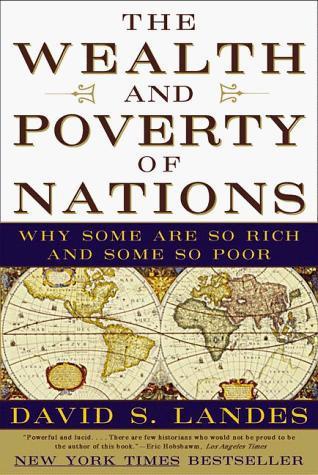
The Wealth and Poverty of Nations: Why Some Are So Rich and Some So Poor
by
David S. Landes
Published 14 Sep 1999
Not easily, because of the decades of experiment that precede a given innovation and the long run of improvement that follows. Where is beginning and where end? The core of the larger process—mechanization of industry and the adoption of the factory—lies, however, in the story of the textile manufacture.* Rapid change there began with the spinning jenny of James Hargreaves (c. 1766), followed by Thomas Arkwright’s water frame (1769) and Samuel Crompton’s mule (1779), so called because it was a cross between the jenny and the water frame. With the mule, one could spin fine counts as well as coarse, better and cheaper than any hand spinner. Then in 1787 Edmund Cartwright built the first successful power loom, which gradually transformed weaving, first of coarse yarn, which stood up better to the to-and-fro of the shuttle, then of fine; and in 1830 Richard Roberts, an experienced machine builder, devised—in response to employer demand—a “self-acting” mule to free spinning from dependence on the strength and special skill of an indocile labor aristocracy.
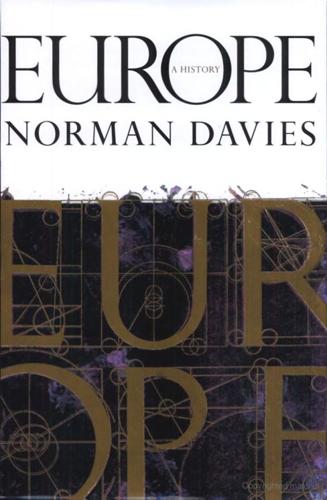
Europe: A History
by
Norman Davies
Published 1 Jan 1996
Machinery had been used ever since the water-mill and the printing-press. In the hands of the eighteenth-century clock-makers it had reached a high level of precision. But the prospect of a power source far more forceful than hand, water, or spring inspired a rash of inventions, all initially in the realm of textiles. Three Lancashire men, James Hargreaves (1720–78) of Blackburn, Richard Arkwright (1732–92) of Preston, and Samuel Crompton (1753–1827) of Hall’ith’ Wood, Bolton, built respectively the spinning jenny (1767), the spinning frame (1768), and the spinning mule (1779). The jenny was suitable only for hand use in cottages; the frame and mule proved suitable for steam traction in factories.